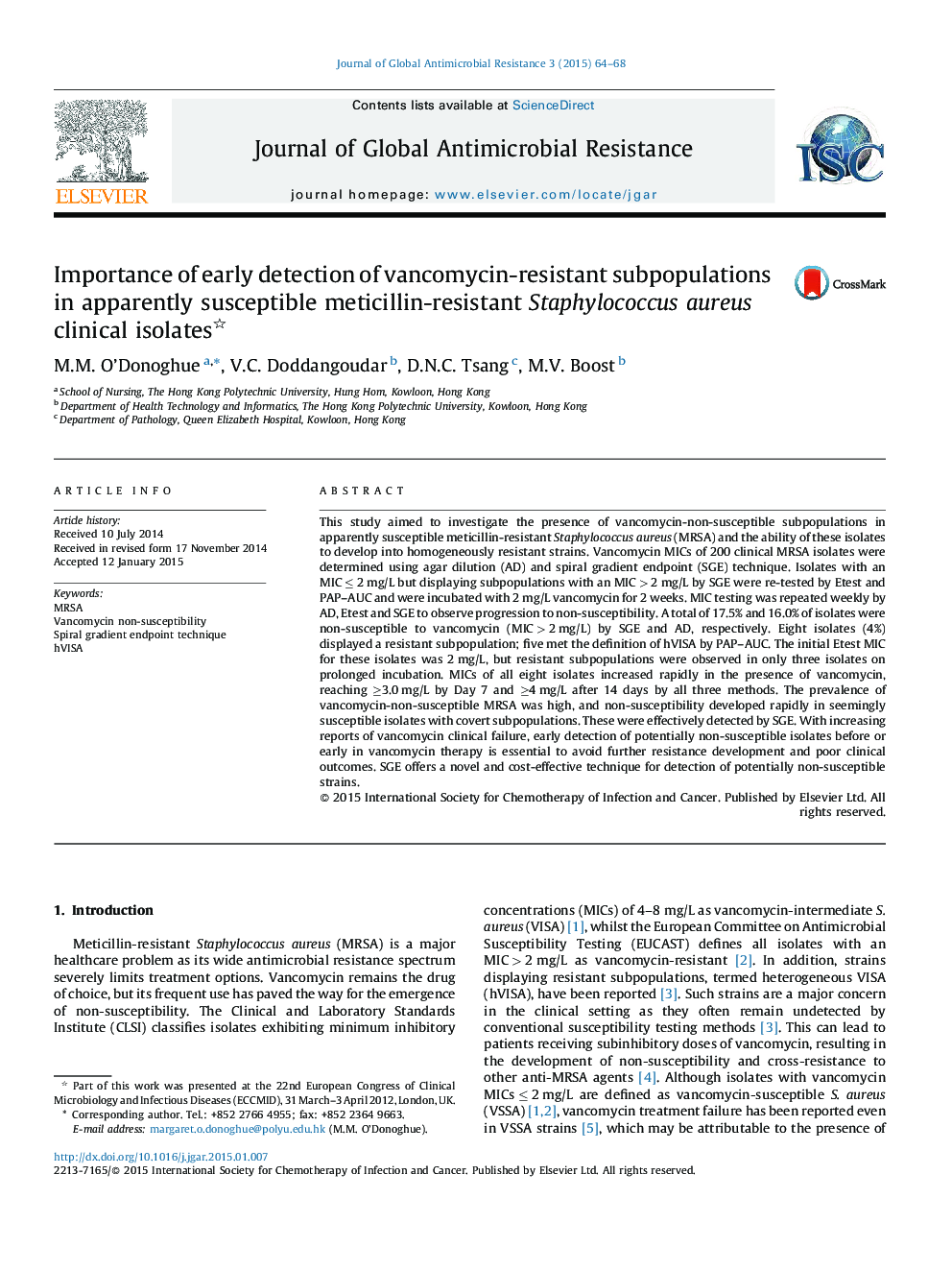| Article ID | Journal | Published Year | Pages | File Type |
|---|---|---|---|---|
| 3405638 | Journal of Global Antimicrobial Resistance | 2015 | 5 Pages |
•The prevalence of vancomycin-intermediate Staphylococcus aureus (VISA) was high.•Heterogeneous VISA (hVISA) were detected in apparently susceptible isolates.•hVISA isolates could rapidly progress to VISA in the presence of vancomycin.•A suitable method for routine laboratory detection of hVISA is urgently needed.•The spiral gradient endpoint technique can efficiently detect hVISA.
This study aimed to investigate the presence of vancomycin-non-susceptible subpopulations in apparently susceptible meticillin-resistant Staphylococcus aureus (MRSA) and the ability of these isolates to develop into homogeneously resistant strains. Vancomycin MICs of 200 clinical MRSA isolates were determined using agar dilution (AD) and spiral gradient endpoint (SGE) technique. Isolates with an MIC ≤ 2 mg/L but displaying subpopulations with an MIC > 2 mg/L by SGE were re-tested by Etest and PAP–AUC and were incubated with 2 mg/L vancomycin for 2 weeks. MIC testing was repeated weekly by AD, Etest and SGE to observe progression to non-susceptibility. A total of 17.5% and 16.0% of isolates were non-susceptible to vancomycin (MIC > 2 mg/L) by SGE and AD, respectively. Eight isolates (4%) displayed a resistant subpopulation; five met the definition of hVISA by PAP–AUC. The initial Etest MIC for these isolates was 2 mg/L, but resistant subpopulations were observed in only three isolates on prolonged incubation. MICs of all eight isolates increased rapidly in the presence of vancomycin, reaching ≥3.0 mg/L by Day 7 and ≥4 mg/L after 14 days by all three methods. The prevalence of vancomycin-non-susceptible MRSA was high, and non-susceptibility developed rapidly in seemingly susceptible isolates with covert subpopulations. These were effectively detected by SGE. With increasing reports of vancomycin clinical failure, early detection of potentially non-susceptible isolates before or early in vancomycin therapy is essential to avoid further resistance development and poor clinical outcomes. SGE offers a novel and cost-effective technique for detection of potentially non-susceptible strains.
